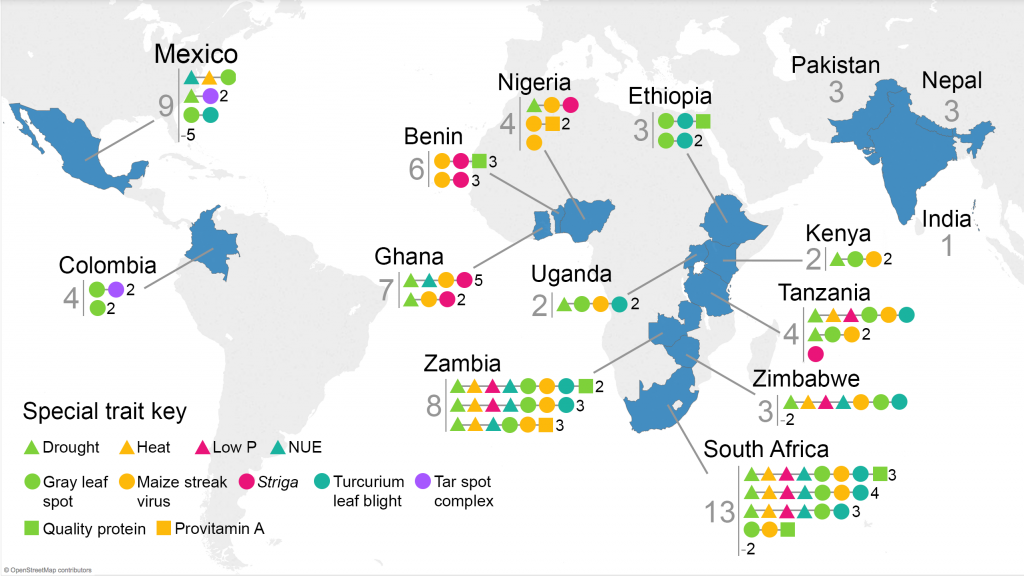
Available now: The 2015 MAIZE Annual Report

2015 marked a year of exciting advances in scientific research and strengthened partnerships for the CGIAR Research Program on Maize (MAIZE). Sixty-four improved maize varieties, based on CIMMYT/IITA germplasm, were released through MAIZE partners in 2015, including 44 in sub-Saharan Africa, 13 in Latin America, and 7 in Asia. In addition to high and stable yield potential, some of the special traits stacked in these varieties include drought tolerance, heat tolerance, nitrogen use efficiency, enhanced protein quality, and resistance to diseases such as tar spot complex, turcicum leaf blight, gray leaf spot, and maize streak virus (MSV), as well as tolerance to the parasitic weed Striga.

The MAIZE team worldwide made tremendous progress in 2015 in various spheres, from the sustainable intensification of maize-based systems to the breeding, release and deployment of stress resilient and nutritious maize. National research organizations and seed companies took advantage of the maize lethal necrosis (MLN) Screening Facility at the Kenya Agricultural and Livestock Research Organization (KALRO)-Naivasha to have 10,790 germplasm entries screened for the disease under artificial inoculation, identifying several MLN-tolerant/resistant inbred lines and pre-commercial hybrids.
Great advances were made in the discovery, validation, and deployment of molecular markers for traits that are important for smallholder production. The maize doubled haploid (DH) facility at Kiboko, Kenya, developed nearly 60,000 DH lines from Africa-adapted genetic backgrounds. Nearly 33,000 DH lines were screened for resistance to MSV using a validated resistance haplotype.
In India and Nepal, Nutrient Expert®, developed through a MAIZE-funded partnership between CIMMYT and the International Plant Nutrition Institute (IPNI), has become widely recognized as a major climate-smart decision support system for raising yield while optimizing nutrient use.
Our researchers work to ensure that this scientific innovation is translated into enhanced impact for the millions of smallholder farmers and consumers who are the heart of our work at MAIZE. Over 7 million hectares were planted with improved MAIZE-derived technologies or management practices in 2015 as a result of CRP research, directly reaching more than 18 million smallholder farm families worldwide.
The above highlights were only a few of the successes of MAIZE in 2015. The progress and impacts MAIZE has been making in sub-Saharan Africa, Asia and Latin America would not be possible without the support of our donors and an array of public and private sector partners working in strong collaboration with the MAIZE team at the lead Centers CIMMYT and IITA. We extend our deepest thanks to all who are involved in the implementation of MAIZE for their commitment and hard work.
B.M. Prasanna,
Director, CGIAR Research Program MAIZE


